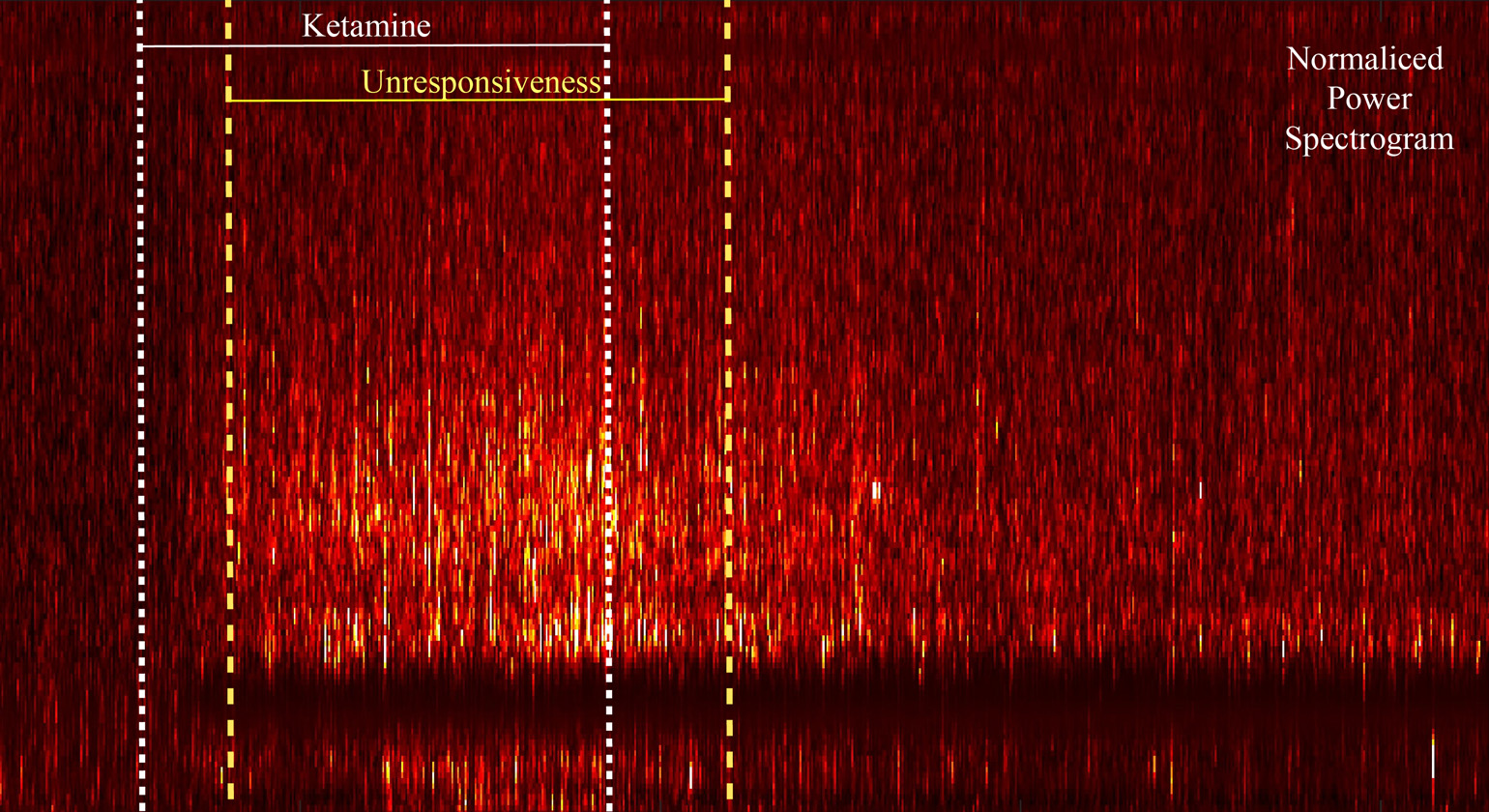Paper details
General anesthetics are drugs that induce reversible unconsciousness. This altered state is associated with highly structured oscillations and neural dynamics. While most common anesthetics potentiate GABAergic transmission, few others interact with NMDA or apha-2 adrenergic receptors. We studied the induction of and recovery from unconsciousness with three different anesthetics: propofol, ketamine and dexmedetomidine.
Under these conditions, we related primate behavioral changes to the dynamics on intracortical local field potentials and multiunit activity in the sensory-motor cortical system. GABA agonist propofol leads, in a fast transition, towards a state of slow oscillations across the cortex, where the neural activity is depressed and phase-locked.

NMDA antagonist ketamine slowly builds-up a slow frequency-modulated increase in gamma activity, where the average neural activity remains unchanged but disorganized. The α2-adrenergic agonist dexmedetomidine induces a state of delta-alpha oscillations and keeps the interregional coherence intact, showing sleep-like neural signatures.
Together with research on close-loop control and precise signal characterization, this knowledge allow us to control the dosage of anesthetics based on individuals’ EEG in real time. Furthermore, understanding how unconsciousness is induced and reversed, and how brain signals are related, will reveal basic mechanisms of brain function.
References:
1 Patel, SR., Ballesteros, JJ., Ahmed, OJ., Huang, P., Briscoe, JB., Eskandar EN. and Ishizawa, Y. 2020. Dynamics of recovery from anaesthesia-induced unconsciousness across primate neocortex. Brain. DOI: 10.1093/brain/awaa0172 Ballesteros, JJ., Huang, P., Patel, SR., Eskandar EN. and Ishizawa, Y. 2020. Dynamics of Ketamine-induced Loss and return of consciousness across primate neocortex. Anesthesiology. DOI: 10.1097/ALN.0000000000003159
3 Ballesteros, JJ, Briscoe, JB and Ishizawa, Y. 2020. Neural signatures of alpha-2 adrenergic agonist-induced unconsciousness and awakening by antagonist. eLife. DOI: https://doi.org/10.7554/eLife.57670


